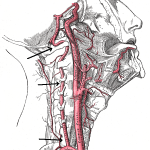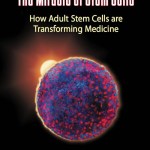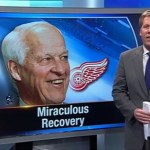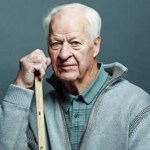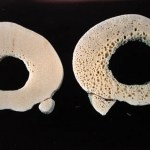Yesterday was a great day for comparative physiology!
Highlights from the seminars on comparative physiology:
Melissa Reiterer, graduate student from Florida Atlantic University, presented her research on how freshwater turtles (Trachemys scripta) survive for long periods of time without oxygen and do not develop oxidative stress after oxygen is restored. The turtles are able to do this by creating their own antioxidants as well as eliminating oxidative stress. In contrast, mammals including humans, develop quite a bit of oxidative stress following a stroke as…
stroke
Eight months ago, I asked the question: Did chiropractic manipulation of her neck cause Katie May’s stroke? Now, it appears, I know the answer, and the answer is yes:
Katie May, a model who posed for Playboy and gained a massive following on Snapchat, suffered a “catastrophic” stroke in early February and later died after being taken off life-support. Now, TMZ reports reports that a visit to the chiropractor left her with an injury that precipitated the stroke.
TMZ obtained May’s death certificate, which says that she suffered a blunt force injury during a “neck manipulation by [a]…
I first became more interested in dubious stem cell clinics nearly two years ago, when I learned that hockey legend Gordie Howe was undergoing stem cell therapy in Mexico to treat his stroke. Being from Detroit, I imbibed the hockey madness of this town growing up, and know that Detroiters hold Gordie Howe in incredibly high esteem. Prominent in stories about Howe were two companies: Stemedica Cell Technologies, a San Diego company marketing stem cell treatments for all manner of ailments, and Novastem a partner company in Mexico that uses Stemedica products. Also prominent in the stories was…
Merino sheep. Original: User:Fir0002 Derivative work: Charles Esson at en.wikipedia via Wikimedia Commons
Researchers from Friedrich Schiller University (Jena, Germany) and Heinrich-Heine-University (Düsseldorf, Germany) teamed up to test whether a heart failure medication that is currently being tested might also improve blood flow in the brain. Their findings were published last month in the American Journal of Physiology, Heart and Circulatory Physiology.
According to the study authors, the small blood vessels in the brains of sheep closely resemble those in the …
Still going strong...here are the highlights from several sessions held on Day 4:
Drawing of Lake Whitefish by William Converse Kendall - Kendall, William Converse, b. (1909) Fishes of the Connecticut Lakes and Neighboring Waters, with Notes on the Plankton Environment, Report of the Commissioner of Fisheries, 1906-1907, Washington, DC: Government Printing Office, p. 39 Fig.1, Public Domain
John Eme (California State University, San Marcos) presented data testing the effects of varying temperatures mimicking overwintering conditions on embryonic development of Lake whitefish. He…
Katie May was a model, and by all accounts a very successful one, having appeared in Playboy, Sports Illustrated, and other magazines and websites. Self-proclaimed the "Queen of Snapchat," she also had nearly two million Instagram followers and was a major social media force, having recently parlayed her modeling and social media career into becoming an entrepreneur. She also died unexpectedly on Thursday night at the too-young age of 34, leaving behind a seven-year-old daughter. What makes May's tragic death an appropriate topic for this blog is not so much her young age but rather the…
Yesterday was a very strange day, at least on the Internet.
I really should learn to remove Twitter from my iPhone on Wednesdays. Why? Wednesdays tend to be my administrative days. I'm not in clinic seeing patients nor am I in the operating room. That's why Wednesday tends to be one of the two days a week when I write grants, do administrative work, and meet with my lab people, among other miscellaneous tasks, such as working on upcoming presentations. So I tend to spend most of the day on Wednesdays sitting in front of my computer, and I'm easily distracted by Twitter or other things…
And now for something completely different... (Yes, there's been enough vaccine blogging for the moment.)
The date of the Kinsman Sports Celebrity Dinner in Saskatoon is fast approaching on February 6. It reminded me of my discussion of how Gordie Howe was flown to Tijuana to undertake a dubious stem cell therapy for his serious stroke that involved the intravenous and intrathecal (into the cerebrospinal fluid) injection of "stem cells," a treatment that was followed by glowing reports from the family and credulous reporters in the press describing Howe's "miraculous" recovery from his…
I'm depressed and angry as I write this.
The reason for this is simple. I hate it when cancer quacks claim the lives of patients with cancer, particularly patients who were eminently treatable for cure. It's happened again, and it makes me sad. Florida cancer quack Brian Clement has claimed the life of Makayla Sault, an 11 year old Ojibwe girl with leukemia:
The entire community of New Credit is in mourning today, following the news of the passing of 11 year old Makayla Sault.
The child suffered a stroke on Sunday morning and was unable to recover. Friends and family from across the…
Seven years ago I returned to Michigan, where I was born and spent the first quarter century of my life, after an absence of more than 20 years. In the interim, I had done my surgical residency and earned my PhD in Cleveland, a surgical oncology fellowship in Chicago, and worked in New Jersey at my first academic job for eight and a half years. Then I was lured back with a job in Detroit. One of the odd things about this return after such a long absence was the culture shock, how much I had forgotten about the Detroit area. One of those things that I had forgotten is just how crazy about…
Image from the American Physiological Society's website.http://www.the-aps.org/mm/Conferences/APS-Conferences/2014-Conferences/…
As anticipated, the meeting today was excellent! Here are some highlights from today:
Dr. Michael Joyner (Mayo Clinic) spoke about how we should reconsider animal models that are used in research as laboratory rodents can be manipulated to match their genotype to their phenotype. In other words, researchers modify the animal's genome to produce a specific disease or attribute they are interested in studying. The problem with this approach is that genes can be…
Researchers observed tiny voids forming in silicon used for solar panels; these voids provide physical evidence of the Staebler-Wronski effect, "which reduces the solar cell efficiency by up to 15 percent within the first 1000 hours."
Using an online avatar with a skin color other than your own makes you less racist in real life; playing a hero makes you less cruel, and playing a villain less benevolent.
Old mouse muscles exhibit "elevated levels of activity in a biological cascade called the p38 MAP kinase pathway" which prevents stem cells from dividing and repairing muscle damage. By…
Three news items were posted on our site today. The first is on two papers by a group in Spain. Normally we don't publicize papers that are not written by Institute scientists, but these are a special case. They appear to have clinched the claims of a Weizmann scientist that one can treat stroke and head trauma without trying to get drugs into the brain. The treatment would consist of upping the levels of a naturally-occurring enzyme in the blood; one of these papers showed that levels of this enzyme in the blood tests of stroke patients were the best predictor of their chances of recovery.…
If someone told you that they wanted to have a perfectly good leg amputated, or that they have three arms, when they clearly do not, you would probably be inclined to think that they are mentally disturbed. Psychiatrists, too, considered such conditions to be psychological in origin. Voluntary amputation, for example, was regarded as a fetish, perhaps arising because an amputee's stump resembles a phallus, whereas imaginary extra limbs were likely to be dismissed as the products of delusions or hallucinations.
However, these bizarre conditions - named body integrity identity disorder (BIID)…
We're used to thinking of neglect as a lack of appropriate care, but to a neuroscientist, it has a very different meaning. "Spatial neglect" is a neurological condition caused by damage to one half of the brain (usually the right), where patients find it difficult to pay attention to one half of their visual space (usually the left).
This bias can affect their mental images too. If neglect patients are asked to draw clocks, many only include the numbers from 12 to 6, while some shunt all the numbers to the right side. When two famous neglect patients were asked to describe a familiar square…
How can a seemingly trivial head injury kill you?
To answer this, you need a little anatomy.
Your brain is a pretty important organ, and is well protected. It sits inside a thick armor (the skull) and floats cushioned in a bath of cerebral-spinal fluid. It's surrounded by several layers of tissue, and its blood supply is kept relatively separate from the rest of the body (the "blood-brain barrier"). This separation helps keep out toxins and micro-organisms (but is imperfect). Just beneath the skull is a tough, leathery layer called the dura mater. This picture shows the skull cut…
A while back I wrote about a naturopathic "physician" who was specifically preying on the Latino community. This is troubling for a number of reasons, some of which I mentioned. In my zeal to rant about the quackery, I may have not delved deeply enough into some of the other important issues.
For example, Hispanics have rates of diabetes and stroke well above the white Anglo population. These are conditions for which we have very effective science-based treatment. Proper treatment of high blood pressure in diabetics reduces the rate of heart attack and stroke by 35-50%. Proper foot care,…
You don't see this every day:
Jake at Pure Pedantry draws due attention to an incredible case report in the American Journal of Psychiatry showing that a lesion in a patient's brain cured the patient's drug addiction, apparently by knocking out the reward circuit that made the addiction pleasurable. (It also made the man badly depressed.)
A stroke that destroyed parts of a drug addict's globus pallidus (pale areas) left him depressed but ended his addiction. Neither drugs nor (alas) wine gave him pleasure any longer.
The article, unfortunately, is pay-per-view, but Jake's summary is…
